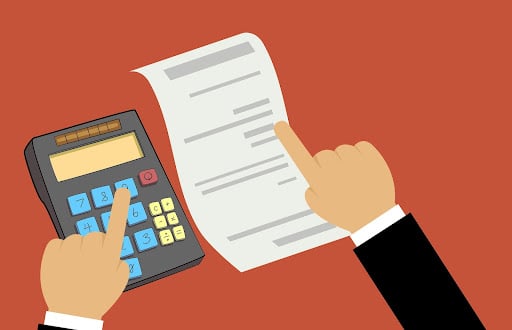
Welcome to the wide world of tax refunds! Whether you’re a newbie in the Australian tax system or a seasoned pro aiming to beef up your returns, this guide has your back. We’ll take you through the nuts and bolts of getting a tax refund in the Great Southern Land, from figuring out your eligibility to estimating the potential windfall.
Back to Basics: Understanding the Aussie Tax System
First up, let’s get our heads around the Australian tax system. In Oz, the financial year runs from 1 July to 30 June, and if you’ve pulled in some dosh during this period, you’re generally expected to lodge a tax return. The Australian Taxation Office (ATO) handles tax collection, and you’ve got from 1 July to 31 October to submit your return for the previous financial year.
It’s worth noting that Aussie tax works on a sliding scale, meaning the more you earn, the more tax you pay. However, you won’t be taxed on all your income. The tax-free threshold sits at $18,200, and if you earn less than this, you might not need to lodge a tax return at all.
Figuring Out Your Tax Refund Eligibility
A tax refund means you’ve forked out more tax during the year than you should’ve. This usually happens when the total tax pinched from your income is more than your actual tax bill. But working out whether you’re due a refund isn’t always a piece of cake.
Your eligibility depends on a stack of factors, including your total income, the tax nicked from that income, and any tax offsets or deductions you’re entitled to. So, it pays to keep a record of these details throughout the year.
Deciphering Deductions and Offsets
To bump up your tax refund, you’ll need to get your head around tax deductions and offsets. A tax deduction is an expense you’ve copped in the process of earning your income and claiming it slashes your taxable income.
Common deductions include work-related expenses, self-education costs related to your job, and donations to deductible gift recipients. Don’t forget to keep evidence of these expenses, as the ATO might ask to see it.
On the flip side, a tax offset directly cuts the amount of tax you owe, and in some cases, it might even lead to a refund. Some familiar tax offsets include the low and middle-income tax offset, the private health insurance rebate, and the senior Australians tax offset.
Estimating Your Tax Refund: Say Hello to the Tax Return Calculator
With your income, deductions, and offsets sorted, you can estimate your tax refund. One of the simplest ways to do this is by using an online tax return calculator.
These handy tools ask for info like your income, tax withheld, deductions, and offsets. Then, they crunch the numbers to give an estimate of your tax bill or refund. Remember, this is just a rough guess, and the final amount could change once you lodge your return.
Lodging Your Tax Return: DIY or Get a Pro?
When it’s time to lodge your tax return, you’ve got a couple of options: Do It Yourself (DIY) or hire a tax pro. If your tax affairs are pretty straightforward, you might choose the DIY route using ATO’s online service, myTax. This platform pre-fills some info from your employer and bank, which can make life a bit easier.
However, if your tax affairs are a bit of a dog’s breakfast — say, if you’ve got investments, rental properties, or you’re running your own business — you might want to get a tax pro on your side. They can help you navigate the minefield and potentially uncover deductions you didn’t even know existed.
Top Tips for Maximizing Your Tax Refund
While we’ve given you the basics for securing your tax refund, it can still feel like a bit of a puzzle. Here are a few more pearls of wisdom to help you make the most of your tax return:
- Claim Work-Related Expenses: You’d be gobsmacked at the array of work expenses you can claim. This includes costs for uniforms, tools, home office expenses, and even travel for work. Remember to keep your receipts!
- Don’t Forget Charitable Donations: Generosity doesn’t just warm your heart—it can also warm your wallet. You can claim donations of $2 or more to registered charities.
- Take Advantage of Income Protection Insurance: If you’ve taken out income protection insurance, don’t forget that these premiums are usually tax-deductible.
- Invest in Your Future: Consider making extra contributions to your super. This not only sets you up for a cushy retirement, but you might also be eligible for tax offsets or deductions.
- Seek Professional Help: If all else fails, get a tax pro in your corner. They’re whizzing at navigating the system and can help you sniff out deductions you might not have considered.
By keeping these tips in your back pocket, you’re already a step ahead in the game and that much closer to a well-deserved tax refund.
Following Up on Your Tax Refund
Once you’ve lodged your tax return, the ATO will take a squiz at it and usually issue a Notice of Assessment within a fortnight, though it can sometimes take longer. If you’re due a refund, the ATO will pop it straight into your bank account.
Figuring out how to bag a tax refund in Australia can feel like you’re trying to nail jelly to a tree, but with a solid understanding of the system, you’re well on your way to maximizing your return. Remember, keep tabs on your income and potential deductions, use tools like a tax return calculator to estimate your refund, and don’t be shy about getting professional help if you need it. Here’s to a ripper tax refund!
Interesting Related Article: “Can Child Support Be Collected from Tax Refunds?“







